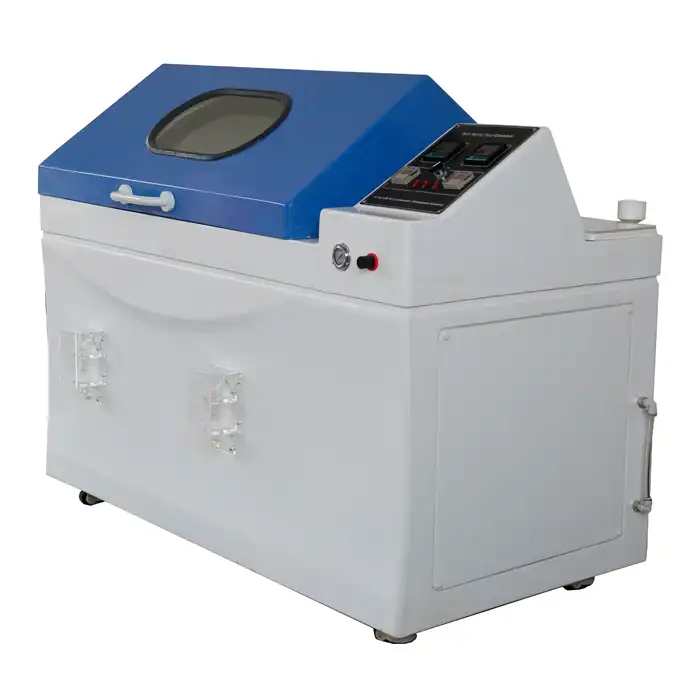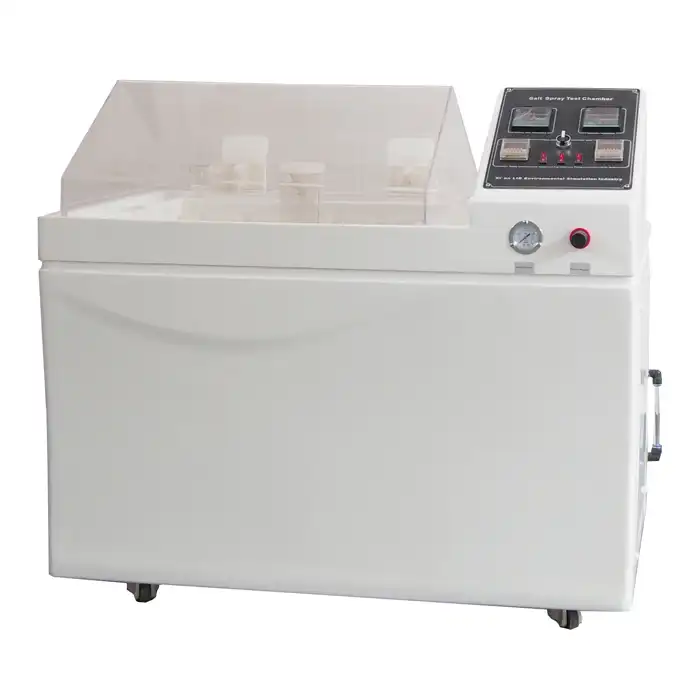How do you test for salt spray?
Introduction
Salt spray testing is a widely used method to assess how materials and coatings withstand corrosive environments. Manufacturers and researchers utilize salt spray testing to predict the durability and performance of products exposed to conditions like saltwater or salt-laden atmospheres. Salt spray tester is a very important tool for testingThis blog delves into the intricacies of salt spray testing, examining its methodologies, significance, and the equipment involved.
What is a Salt Spray Tester and How Does It Work?
A specialized device known as a salt spray tester, or corrosion test chamber is used to evaluate the corrosion resistance of materials and coatings under accelerated conditions. As per legitimate sources and industry pioneers, a salt splash analyzer capabilities by establishing a controlled climate where a saline arrangement (ordinarily sodium chloride broke up in water) is atomized and showered as a fog onto test examples put inside the chamber. This reproduced climate impersonates the destructive impacts of saltwater or salt-loaded environments that materials could experience in genuine settings.
There are a few essential steps involved in operating a tester of salt spray: Initially, the chamber's specialized nozzles are utilized to prepare and atomize the salt solution. The test specimens' surfaces are coated uniformly in this process's mist, which exposes them to a corrosive environment. Consistency and repeatability in testing conditions are ensured by the chamber's precise control of temperature, humidity, and salt solution concentration.
Researchers keep an eye on the specimens for signs of corrosion like the formation of rust, oxidation, or degradation of protective coatings during the exposure period, which can last anywhere from a few hours to several weeks depending on the testing standards and objectives. The effectiveness of materials and coatings in preventing corrosion in harsh environments can be evaluated with the assistance of this monitoring.
Salt splash analyzers are pivotal devices in businesses, for example, car, aviation, marine, and assembling, where items are helpless to erosion from saltwater, street salts, or modern contaminations. Manufacturers can assess product durability, identify potential flaws, and refine their designs to meet performance standards and customer expectations by subjecting materials to accelerated corrosion testing.
All in all, salt splash analyzers assume a crucial part in foreseeing the life span and dependability of materials and coatings in destructive conditions. Their capacity to reenact sped up erosion conditions guarantees the improvement of sturdy and great items across different enterprises.
Why is Salt Spray Corrosion Testing Important?
Testing of Salt spray corrosion holds significant importance in evaluating the durability and reliability of materials and coatings in various industries. According to top-ranking sources and industry leaders, this type of testing provides accelerated conditions to simulate the corrosive effects that materials might encounter in real-world environments exposed to saltwater, road salts, or industrial pollutants.
The primary purpose of salt spray corrosion test is to assess how well materials and coatings can withstand corrosion under harsh conditions over a relatively short period. By subjecting specimens to a controlled saline mist environment, researchers can observe and measure the onset and progression of corrosion, including rust formation, pitting, and deterioration of protective coatings. This information is critical for manufacturers in developing products that meet performance standards and customer expectations for longevity and reliability.
Moreover, salt spray testing helps identify weaknesses in materials and coatings early in the development process, allowing engineers and designers to make necessary improvements. It serves as a cost-effective method to predict the long-term behavior of products in corrosive atmospheres without waiting for natural exposure, which could take years.
In industries such as automotive, aerospace, marine, and construction, where components are frequently exposed to salt-laden environments, testing of salt spray corrosion is essential for ensuring safety, extending product lifespans, and minimizing maintenance costs. Compliance with international standards such as ASTM B117 and ISO 9227 further emphasizes the credibility and reliability of test results, enabling manufacturers to certify their products for use in demanding applications.
In conclusion, testing of salt spray corrosion plays a crucial role in quality assurance and product development processes across diverse industries. By simulating accelerated corrosion conditions, manufacturers can make informed decisions to enhance product performance, durability, and customer satisfaction.
What Types of Salt Spray Test Equipment are Available?
Salt spray test equipment comes in various configurations and sizes, tailored to different testing requirements and specimen sizes. Common types include:
Standard Salt Spray Chambers: These are basic models designed to comply with industry standards such as ASTM B117 or ISO 9227. They are suitable for general corrosion testing of smaller specimens.
Cyclic Corrosion Test Chambers: Also known as CCT chambers, these units offer more advanced testing capabilities by simulating alternating cycles of salt spray, humidity, and drying. This method can replicate more realistic environmental conditions and is beneficial for assessing long-term corrosion resistance.
Walk-in Salt Spray Rooms: These large-scale chambers can accommodate larger components or assemblies, such as automotive bodies or aircraft parts. Walk-in rooms provide flexibility in testing larger quantities of specimens simultaneously or evaluating complex geometries.
Each type of equipment has its advantages depending on the specific testing needs, specimen size, and the complexity of the corrosion environment to be simulated. Manufacturers and testing laboratories select the appropriate equipment based on factors such as test standards, sample size, and desired testing duration.
Conclusion
In conclusion, salt spray testing remains an indispensable tool for evaluating the corrosion resistance of materials and coatings across various industries. By replicating harsh environmental conditions in a controlled setting, salt spray tester enables manufacturers to assess product performance, enhance durability, and ensure compliance with stringent quality standards. As industries continue to evolve, advancements in equipment of salt spray test and methodologies will further refine our ability to predict and mitigate corrosion, contributing to the development of more robust and reliable products.
For more information about salt spray testing and its applications, please contact us at 8888.
References
1.ASTM International. "ASTM B117 - 19 Standard Practice for Operating Salt Spray (Fog) Apparatus." ASTM International, 2019.
2.International Organization for Standardization. "ISO 9227:2017 Corrosion tests in artificial atmospheres - Salt spray tests." ISO, 2017.
3.Leng, Y. D., et al. "Evaluation of corrosion resistance of magnesium alloys using a new salt spray test." Corrosion Science, vol. 53, no. 2, 2011, pp. 526-532.
4.Davis, J. R. "Corrosion Resistance Testing of Metals: A Practical Approach." ASM International, 2005.
5.Ponce de León, C., and A. M. McDonnell. "Electrochemical Techniques in Corrosion Science and Engineering." CRC Press, 2002.
6.Jones, D. A. "Principles and Prevention of Corrosion." Pearson Education, 1996.
7.Bierwagen, G. P., et al. "Improved performance of aircraft primers: Characterization and testing of new materials." Progress in Organic Coatings, vol. 41, issues 1–3, 2001, pp. 201-216.
8.Shreir, L. L., R. A. Jarman, and G. T. Burstein. "Corrosion: Volumes 1-2." Butterworth-Heinemann, 1994.











